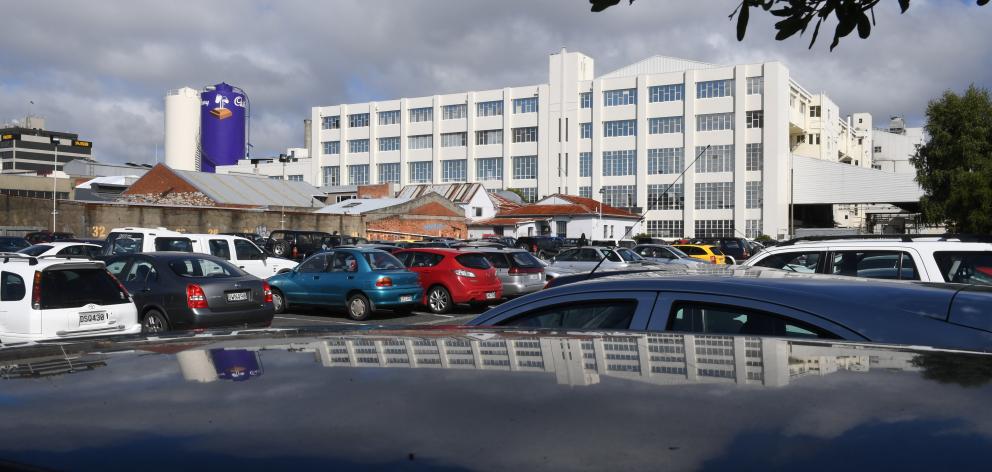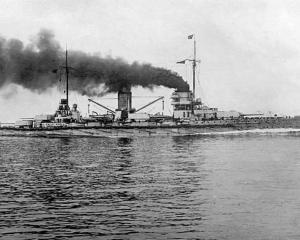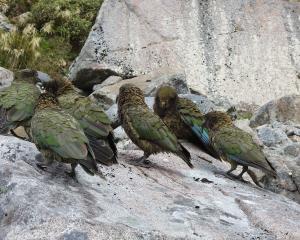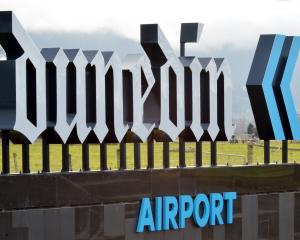
Dunedin has long been a centre of food and beverage manufacturing and, true to Otago’s pioneering tradition, many of the businesses began life as family-owned enterprises seeded by entrepreneurs. Among the iconic brands grown here were biscuit and confectionery manufacturer Mackintosh Caley Phoenix; makers of jam and canners of meat, fish and fruit, Irvine & Stevenson St George Co Ltd (1881); coffee and spice merchants W. Gregg & Co (1861, later Cerebos Greggs); flour millers and producers of rolled oats Harraway & Sons Ltd (1867); breadmakers J. G. Laurenson & Son Ltd (1891); Bell Tea (1898); Speight’s Brewery (1876); and biscuit maker R. Hudson & Co (1868, later Cadbury Confectionery Ltd). We are fortunate to still host Harraways, Gregg’s and Speight’s; we must do our utmost to keep Cadbury here too.
Cadbury’s Dunedin connection dates back to 1868 when Richard Hudson arrived and opened his first biscuit bakehouse. According to Emeritus Prof Helen Leach, it produced the water and wine biscuits, digestive and malt biscuits that were essential items on Victorian tables. In 1884, Hudson opened the southern hemisphere’s first chocolate and cocoa manufacturing plant. In 1930, British company Cadbury Brothers, along with J. S. Fry & Sons, bought a controlling share in Hudson’s venture. The business flourished as import restrictions protected local industry and workers’ jobs.
Multinational company Mondelez International, at the time Kraft Foods, bought Cadbury in 2010. The company has two other chocolate factories in Australasia, in Melbourne and Tasmania, and to maximise efficiencies all three factories have become specialised. The Dunedin plant manufactures chocolate "crumb" — an important ingredient in many Cadbury products — as well as the chocolate box assortments. It is also the only production facility of the "local gems" that are marketed only in New Zealand: Jaffas (first made in 1931), Pinky Bars (launched in 1961), Moro, Pineapple Lumps, Chocolate Fish, Perky Nana, Buzz Bars and marshmallow Easter eggs. Of the plant’s total output, 70% is exported. All other Cadbury products sold here in New Zealand are imported. Chocolate blocks, for example — which according to Nielsen in 2016 comprised $139million out of a total chocolate market of $365 million — are manufactured in Tasmania.
Despite investing $80 million in the Dunedin plant over the past 10 years, Mondelez announced a proposal last month to cease production here early next year. That would effectively end the company’s 150-year manufacturing history in the city, cost 362 jobs, and have a significant impact on the plant’s contractors and suppliers. Along with many readers, I feel for those individuals and their families, but we should also be exploring how we can prevent this happening.
I was surprised at the proposal to move New Zealand production to Australia, for several reasons. Mondelez International’s vice-president for New Zealand, Australia and Japan, Amanda Banfield, acknowledges the Dunedin plant is the leading factory for efficiency and its staff are highly skilled, with an excellent culture led by Judith Mair — so it clearly isn’t "broken".
The New Zealand chocolate consumer market is also growing by 6% each year, whereas the Australian market is flat, so the proposal also runs against international trends in which manufacturing tends to move to emerging or growing economies. Production costs, such as wages, are higher in Australia, and the regulatory environment more demanding.
Mondelez will also be placing all its (Easter) eggs in one basket by concentrating production in one or two locations. Speight’s learnt this lesson when it lost its Canterbury brewery overnight in the Canterbury earthquake of 2011. The Dunedin factory had to quickly expand to cope with increased production. It became the second-largest brewery in New Zealand, and the resulting redesign has enhanced the popular Speight’s tour attraction. Has Mondelez considered what might happen if production in Australia is similarly compromised?
So how can we keep Dunedin’s Cadbury factory open for business? I’m told it needs to treble its production to be economically viable. Given its production used to be twice what it is today, and that only one third of the factory capacity is utilised, I believe this is logistically achievable provided some investment is made to bring the building up to modern standards.
Dunedin has a good labour market, and if sufficient workforce is not available we offer newcomers affordable housing, great schools and tertiary education.
The costs involved in moving product from Dunedin to Australia is said to be 17% of the total costs, which should be offset by cheaper operational costs. I do not know what Mondelez pays to send product manufactured in Australia back to New Zealand.
Dunedin also has the necessary infrastructure. We enjoy ready access to high-quality fresh milk, our local port is world standard and we have an international airport.
Finally, Mondelez should not underestimate the value of the New Zealand Inc brand and the values of provenance, quality and sustainability attached to it. I predict in the future more multinational organisations will seek association with the New Zealand brand, rather than distancing themselves from it.
What about Cadbury World? With more than 110,000 visitors each year, it is an important tourist attraction.
Mondelez plans to retain and improve it to enhance the visitor experience and increase visitor numbers. There are real benefits attached to this for both Cadbury and the city, as this attraction will continue to celebrate manufacturing history in Dunedin while promoting the Cadbury brand to substantial numbers of national and international visitors. But it’s important to note that the most successful attractions of this type internationally are attached to a working factory.
Furthermore, dismantling and moving the "local gems" equipment will cost Cadbury $25 million. Even for a multinational, the continued operation of a boutique manufacturing operation with significant brand value attached to it should be sufficient reason to retain the operation, provided it is profitable.
Mondelez has said it would like to find a buyer for the site who will utilise it in a way that supports the local community and economy. One consideration is to look to a development such as Salts Mill in Saltaire, England, a historic former fabric mill that has been transformed into a visitor attraction with art, dining and shopping. Mondelez has stated it wants to leave a legacy in Dunedin. Let’s see if together we can work to ensure the legacy includes an operational factory that provides employment for our people and focus for an enhanced tourist attraction.












